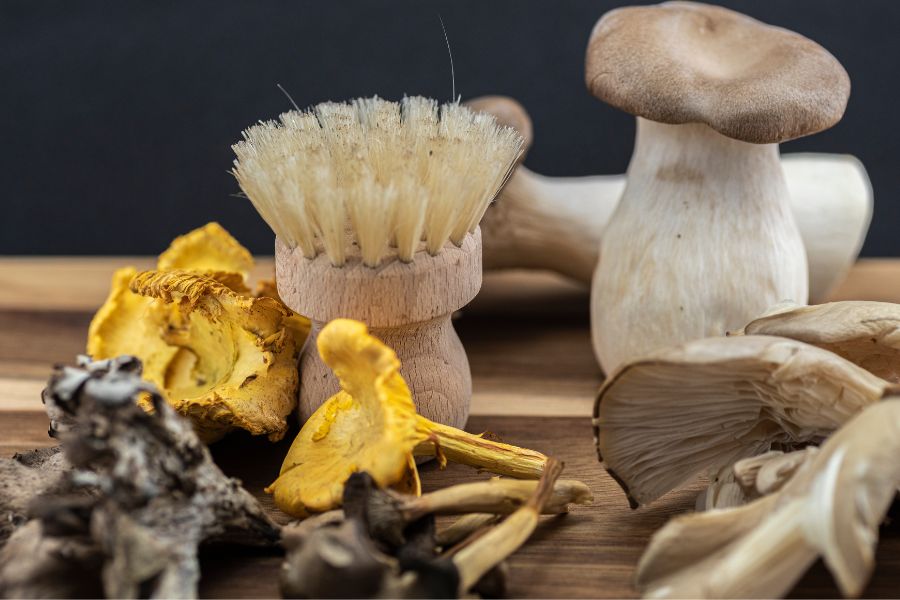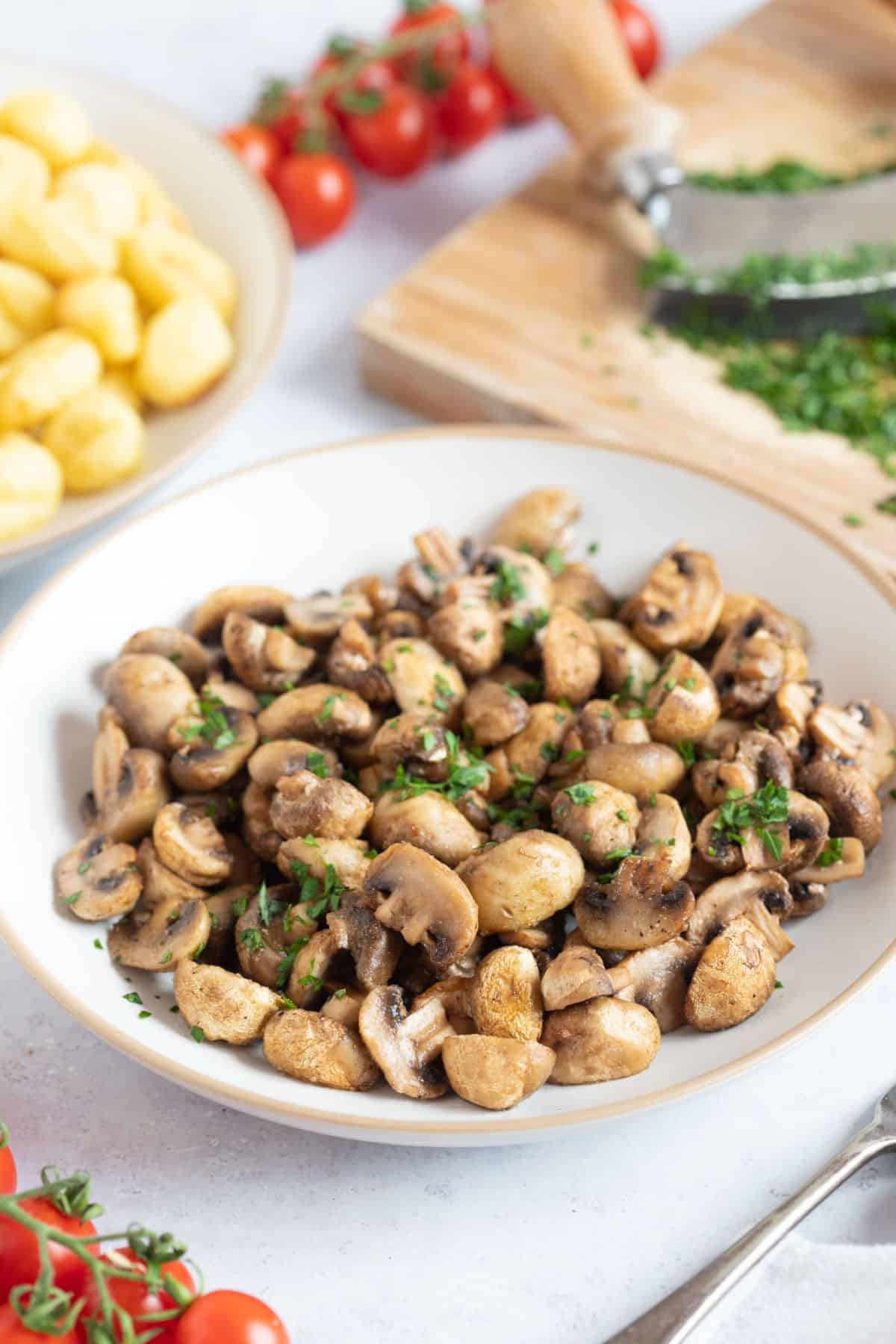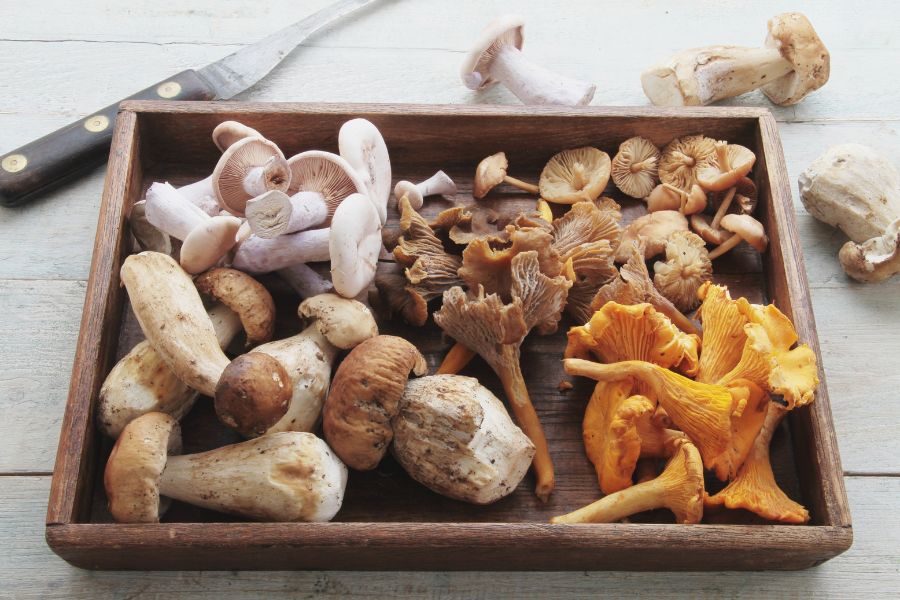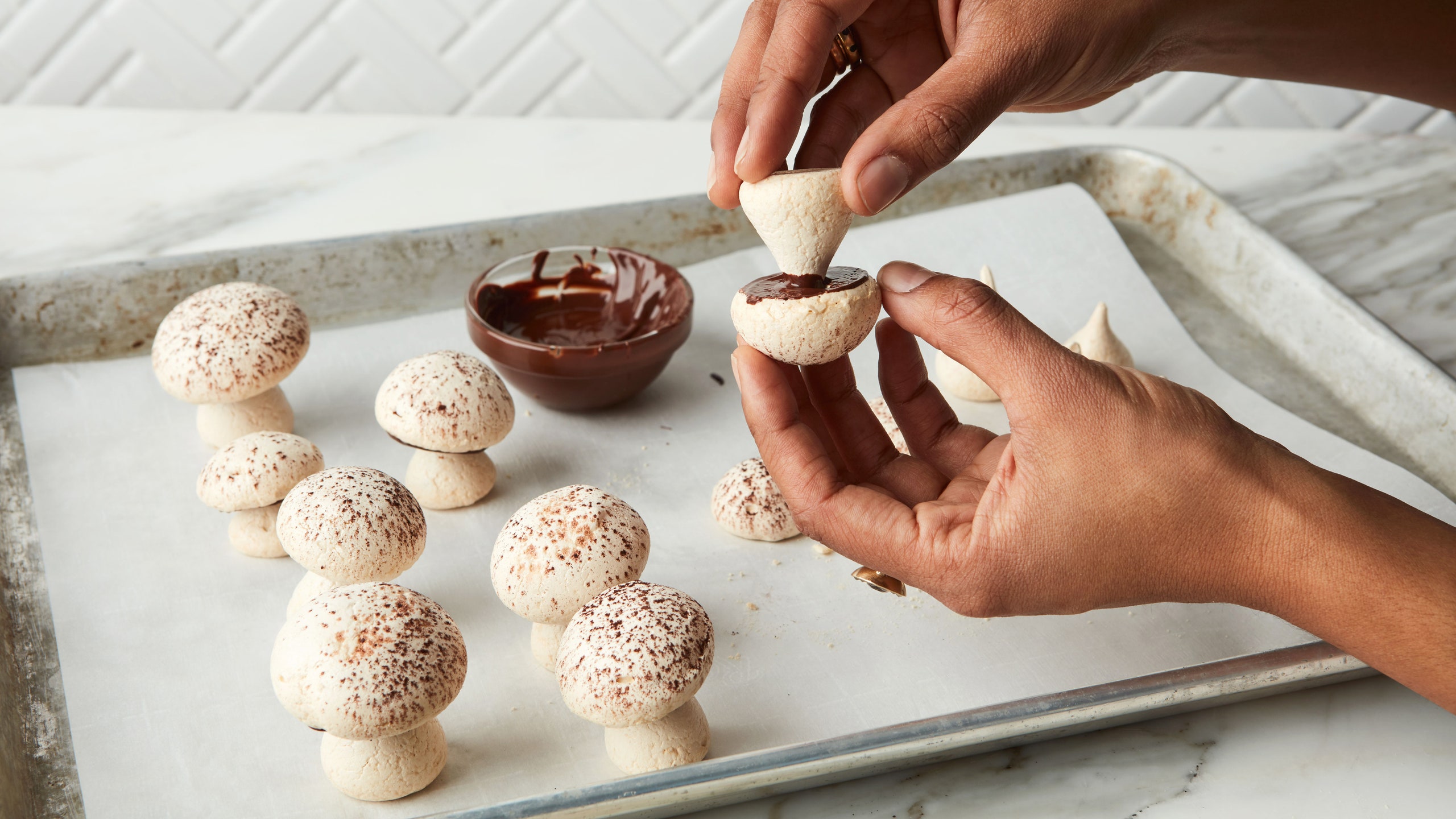The Mushroom Brush is a handy tool for removing dirt and debris from fresh mushrooms without damaging them, ensuring they retain their flavor. It can also be used as a bread baking brush.
Different Types Of Mushroom Brushes
When it comes to cleaning mushrooms, using a dedicated mushroom brush can make the task easier and more efficient. There are different types of mushroom brushes available, each with its own unique features and benefits. Let’s take a closer look at three popular types of mushroom brushes: nylon bristle brushes, natural bristle brushes, and silicone bristle brushes.
Nylon Bristle Brushes
Nylon bristle brushes are a common choice for mushroom cleaning due to their durability and versatility. These brushes are typically made with synthetic nylon bristles that effectively remove dirt and debris from the mushroom’s surface without causing any damage. The bristles are soft enough to avoid bruising or tearing the delicate flesh of the mushrooms, ensuring that their flavor and texture remain intact. Nylon bristle brushes are also easy to clean and maintain, making them a practical choice for regular use.

Natural Bristle Brushes
Natural bristle brushes are another excellent option for cleaning mushrooms. These brushes are made with soft bristles sourced from natural materials such as pig or horsehair. The gentle bristles effectively remove dirt without causing any harm to the mushroom’s skin. Natural bristle brushes are prized for their ability to maintain the mushrooms’ natural flavors and textures while ensuring a thorough clean. Additionally, these brushes are eco-friendly as they are made from sustainable, renewable materials.
Silicone Bristle Brushes
Silicone bristle brushes are a more modern alternative for mushroom cleaning. These brushes feature soft bristles made from food-grade silicone. The flexible and heat-resistant bristles effectively remove dirt while being gentle on the mushrooms. Silicone bristle brushes are easy to clean and sanitize, making them a hygienic choice for mushroom enthusiasts. They are also dishwasher-safe, saving you time and effort in the cleaning process. These brushes are available in various colors and designs, adding a touch of fun and style to your kitchen.
In conclusion, choosing the right mushroom brush is essential for maintaining the flavor and quality of your mushrooms while ensuring a thorough clean. Nylon bristle brushes, natural bristle brushes, and silicone bristle brushes each have their own unique benefits, so you can pick the one that suits your preferences and needs. Whether you prefer the durability of nylon bristles, the eco-friendliness of natural bristles, or the convenience of silicone bristles, a dedicated mushroom brush will make the task of cleaning mushrooms a breeze.

Expert Tips And Tricks For Cleaning Mushrooms
Gently clean your mushrooms without water using a mushroom brush, which effectively removes dirt and debris without damaging the fungi. It’s also great for bread baking! Say goodbye to flavor loss from rinsing.
Fresh mushrooms are a versatile ingredient that can add depth and flavor to a variety of dishes. But before you start cooking with them, it’s important to clean them properly to ensure their full potential is unlocked. In this article, we will share expert tips and tricks for cleaning mushrooms, including brushing techniques, how to clean different mushroom varieties, and alternative tools that can be used for cleaning. Follow these tips and tricks to make sure your mushrooms are ready to shine in all your culinary creations!
Brushing Techniques
When it comes to cleaning mushrooms, brushing is one of the most effective techniques. It allows you to remove any dirt or debris without washing the mushrooms, which can make them waterlogged and affect their texture. To brush mushrooms:
- Start by choosing a mushroom brush with soft bristles. This will help to gently remove any dirt without damaging the delicate surface of the mushrooms.
- Hold the mushroom firmly in one hand and use the brush in the other hand to gently sweep across the surface of the mushroom.
- Brush in a back-and-forth motion, applying light pressure to remove any dirt or debris. Pay special attention to the crevices and gills of mushrooms, as those are common areas where dirt can accumulate.
- Continue brushing until the mushroom looks clean and free of any visible dirt.

How To Clean Different Mushroom Varieties
Not all mushrooms are created equal, and some varieties may require special cleaning techniques. Here are a few tips for cleaning different types of mushrooms:
| Mushroom Variety | Cleaning Technique |
|---|---|
| Button Mushrooms | Use a mushroom brush to gently brush off any dirt. If the mushrooms are particularly dirty, you can also use a damp paper towel to wipe them clean. |
| Portobello Mushrooms | Remove the stem and use a mushroom brush to gently clean the cap. Wipe the gills with a damp paper towel to remove any dirt. |
| Shiitake Mushrooms | Remove the stem and use a mushroom brush to clean the cap. If the mushrooms are particularly dirty, you can also rinse them quickly under cold running water and pat them dry. |
Using Alternative Tools For Cleaning Mushrooms
If you don’t have a mushroom brush on hand, don’t worry! There are alternative tools that can be used to clean mushrooms:
- A soft, clean toothbrush can be used as a substitute for a mushroom brush. Simply use it to gently brush off any dirt or debris.
- A damp paper towel can also be used to wipe mushrooms clean if you don’t have a brush. Gently wipe the mushrooms, making sure to remove any visible dirt.
- Some chefs even recommend using a soft, clean paintbrush to clean mushrooms. The bristles are gentle enough to avoid damaging the mushrooms while effectively removing dirt and debris.
With these expert tips and tricks for cleaning mushrooms, you can ensure that your mushrooms are clean and ready to enhance the flavors of your favorite dishes. Whether you’re cooking with button mushrooms, portobellos, or shiitakes, proper cleaning techniques are essential for the best results. So grab your mushroom brush or alternative tool of choice and get cleaning – your taste buds will thank you!

Frequently Asked Questions Of Mushroom Brush
What Does Mushroom Brush Do?
A mushroom brush effectively removes dirt and debris from mushrooms without damaging them. It is used to brush off dirt and soil instead of rinsing them with water, which can cause them to lose flavor. Cultivated mushrooms can be brushed off with a dry towel or mushroom brush instead of being washed.
Do I Need A Mushroom Brush?
No, you do not need a mushroom brush. Cultivated mushrooms do not need to be washed as they are grown in a sterile environment. Simply use a dry towel or brush to remove any dirt or debris.
What Can You Use Instead Of A Mushroom Brush?
Instead of a mushroom brush, you can use a dry pastry brush or a dry paper towel to gently remove dirt from cultivated mushrooms.
What Is A Mushroom Brush Used For?
A mushroom brush is used to remove dirt and debris from fresh mushrooms without rinsing them in water. This helps to maintain the flavor and texture of the mushrooms while keeping them clean.
Conclusion
To maintain the flavor and freshness of your mushrooms, it is important to remove dirt and debris without rinsing them in water. A mushroom brush is the perfect tool for this task, gently brushing off any dirt while preserving the delicate fungus.
This versatile brush can also be used for baking bread or other kitchen tasks. By using a mushroom brush, you can ensure that your mushrooms remain clean and flavorful without compromising their quality. Say goodbye to rinsing and hello to the convenience of a mushroom brush!


3 thoughts on “Mushroom Brush Master: Expert Tips and Tricks for Cleaning Mushrooms”